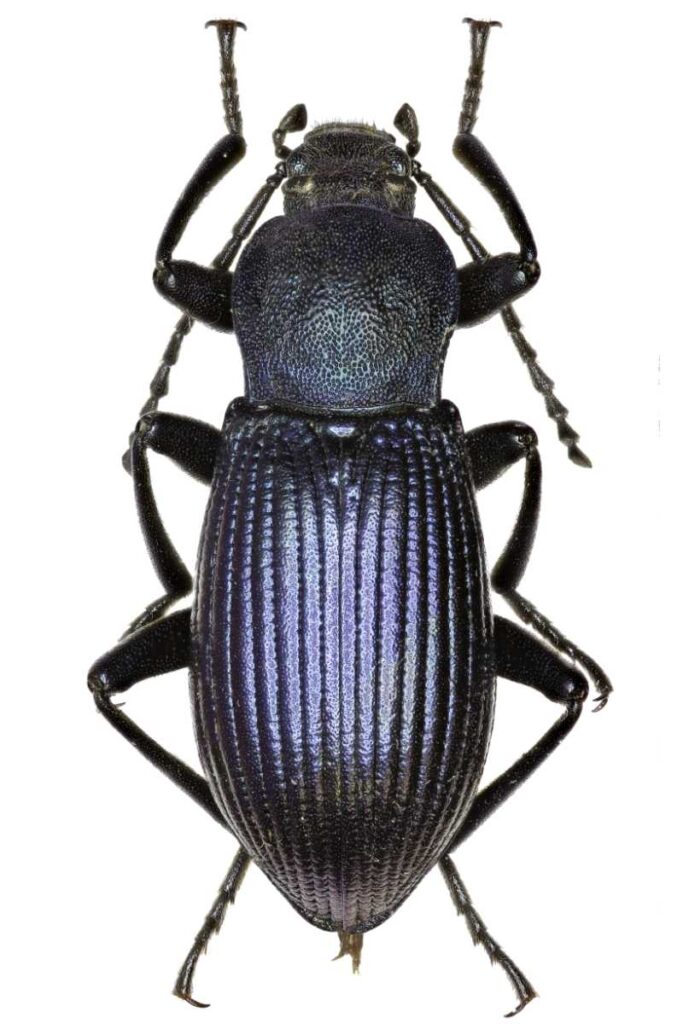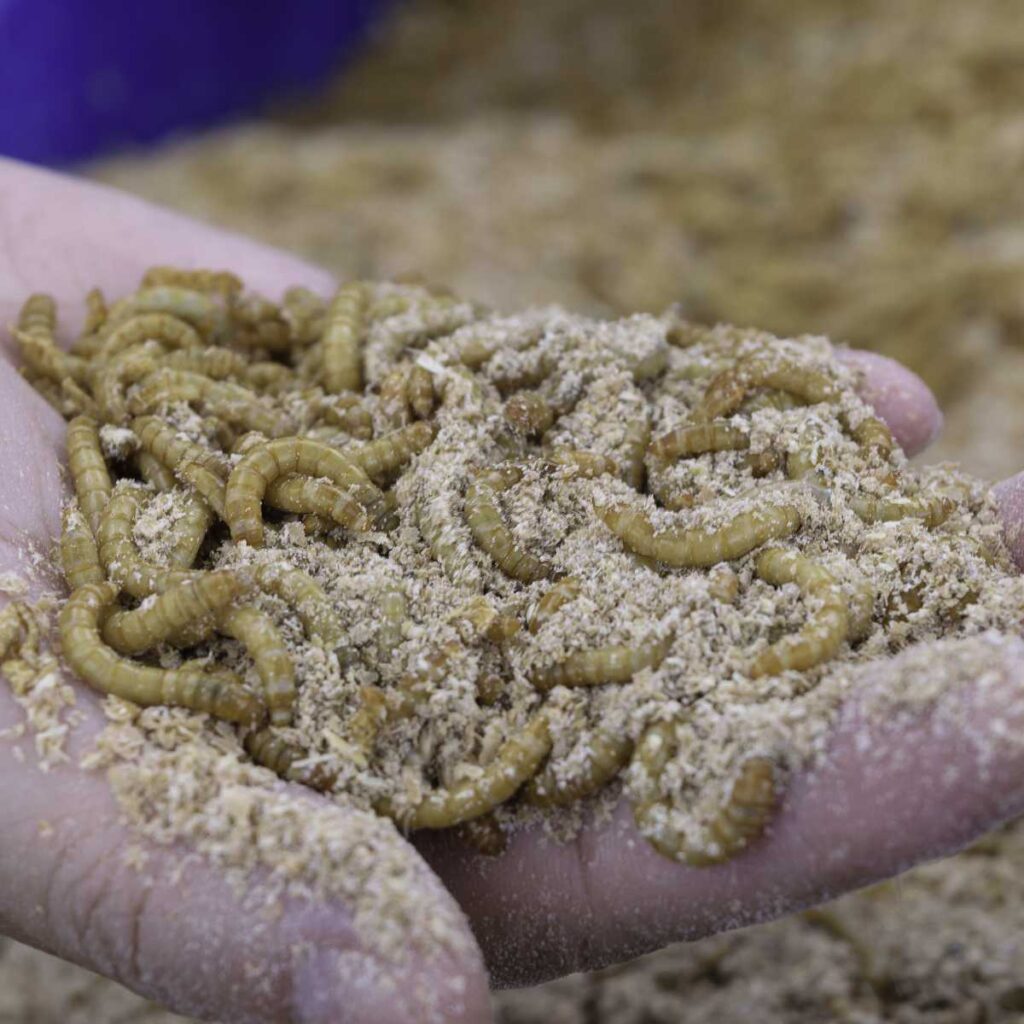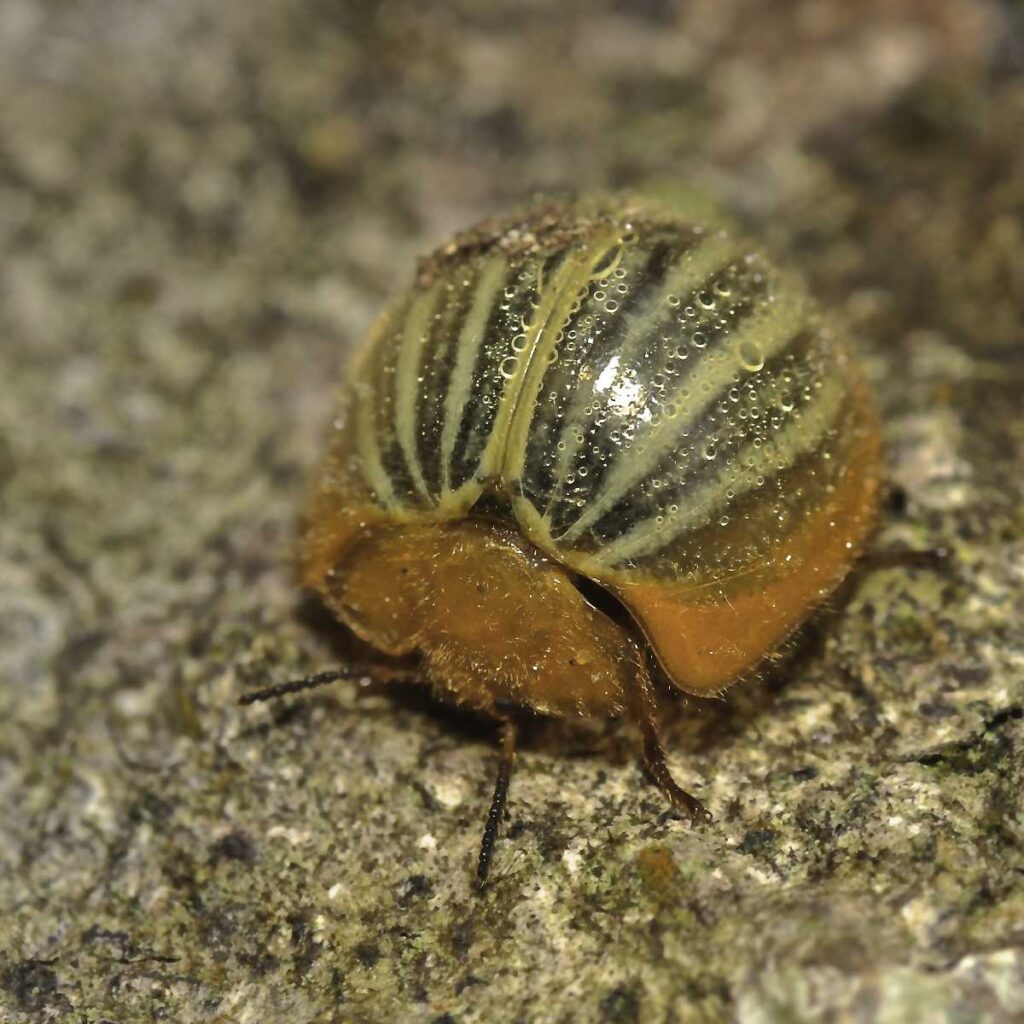Last Reviewed and Updated on March 11, 2023
Darkling beetles are a fascinating group of beetles that are found all over the world, and they are one of the scientifically most important species. These beetles can be found in a variety of habitats, from deserts to forests, and they come in many shapes and sizes. Explore some interesting facts about darkling beetles, from their adaptations to their use.

About darling beetles
Darkling beetle is a common name for any of more than 20.000 species of beetles from the Tenebrionidae family. They are a diverse family of beetles that can be found in a variety of habitats all around the world.
Darkling beetles can be found in many different types of habitats, including deserts, forests, grasslands, and even in urban environments. Some species prefer sandy or rocky areas, while others prefer moist environments like rotting logs or leaf litter. They are more common in dry and warm climates.
With 20,000 species of darkling beetles, there is much variety in their appearance. They come in a wide range of shapes and sizes. Most species are black or dark brown, but some have brightly colored markings. Darkling beetles have hard exoskeletons that protect their bodies, and many species have wings that they use for flight.
Most darkling beetles are omnivores and scavengers and feed on dead plant and animal material.
All known darkling beetles reproduce sexually, with males and females mating to produce eggs.
While some species of darkling beetles are common and widespread, others are threatened or endangered.
Interesting Facts About Darkling Beetles
Dive deep into these fun facts about darkling beetles.

Love learning about all kinds of animals? Read our list of most unusual animal facts ever.
1. Larvae of yellow mealworm beetle are used as food for pets

Yellow mealworm beetle is one of the species of darkling beetles whose larvae you have probably seen at one point. The larvae of these beetles are typically used as pet food for reptiles, fish, and birds.
They are also commonly used as fishing bait.
Larvae of a few other species of darkling beetles are used as pet food as well.
2. Their name means “lover of darkness”
The term darkling means growing dark or characterized by darkness, and this group of beetles was given this name due to their liking of living in dark places and nocturnal activity (many species are active both at day and night).
3. Larger darkling beetles are usually flightless, but some can fly
All darkling beetles have wings, but not all of them use them, as some species are absolutely incapable of flight. Like other beetles, they have two pairs of wings, with the front pair being hardened into protective coverings called elytra.
Larger species of darkling beetles are usually flightless, and those that can fly, like the yellow mealworm beetle, don’t fly often.
4. Darkling beetles have a long lifespan for an insect
They are far from record-breaking but compared to most other insects, they are long-lived. Most common insects we come into contact with (flies, mosquitoes, bed bugs…) only live for a couple of days to a couple of weeks. Many insects live less than a year. Adult darkling beetles have an average lifespan of about 6 months to 2 years, but many species can live close to 10 years.
5. Some adapted to life in the Namib Desert, one of the aridest areas in the world
The Namib Desert receives only about 0.55 in / 1.4 cm of rain per year, and it is home to Stenocara gracilipes, Onymacris unguicularis (head-standing beetle), Physosterna cribripes (desert toktokkie) a group of darkling beetles well adapted to this harsh environment.
Wondering how these beetles get their water? These beetles assume a head-down stance in the fog, using the rest of their bodies to collect “fog.” Fog condenses on their bodies and forms droplets of water which then drip down their bodies towards the mouth of the beetles.
6. Some are pretty colorful
While many species of darkling beetles are covered by either black, dark brown, or brown smooth shell, there are exceptions.
The Nilio genus of false lady beetles is a wonderful example.

7. Darkling beetles undergo a complete metamorphosis
They go through a complete metamorphosis during their life cycle. They start as eggs that hatch into a larva. Larva molts a few times before it develops into a pupa which develops into an adult beetle.
8. Frégate Island giant tenebrionid beetle is the largest
Frégate beetle (Polposipus herculeanus) is the largest known species of the darkling beetle (it is a proud holder of the Guinness World Record) as it can reach lengths of up to 1.18 in / 3 cm.
9. They have been to space
Darkling beetle larvae (yellow mealworm beetle / Tenebrio molitor) have been sent to space as part of scientific research on multiple occasions, starting way back in 1968. In 1968, the Soviet Union’s Zond 5 mission carried several biological specimens, including two tortoises, fruit fly eggs, and mealworms, around the Moon and back to Earth (source).
10. Their larvae might be key to the greener future
The larvae of the darkling beetle are a rich source of protein and can be used as a sustainable alternative to traditional protein sources, such as meat and soy. They are already used as food in some parts of the world. What is most important in this aspect is that the larva has a much lower environmental impact than traditional protein sources.
The larvae have also been shown to be effective in breaking down certain types of plastic, including polystyrene foam. Thy poses special gut microbes that can digest polystyrene, which is generally not biodegradable and poses a significant environmental threat (source).
